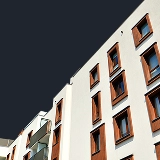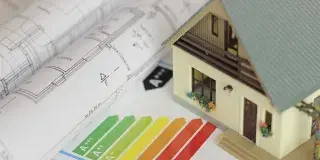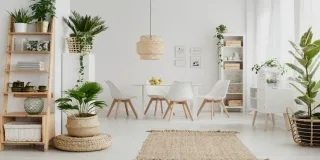In an environment where sustainability and energy efficiency are increasingly necessary, especially in the real estate sector, passive houses stand out as a burgeoning residential trend. The concept of passive houses aims to minimize the use of conventional heating and cooling systems by optimizing the climate and existing environmental conditions.
After gaining popularity in architecture schools in the United States during the 1980s, passive houses drove a shift in the perception of residential energy consumption. In Europe, this term is associated with the Passivhaus standard, born in Germany in the 1990s, which promotes a reduction of up to 70% in energy consumption compared to traditional homes.
In Spain, the first case of a passive house occurred in 2009. Since then, its popularity has steadily grown, perceived as an ecological solution that respects the environment and reduces long-term energy costs.
Technical Requirements of Passive Houses
In the Spanish climate, the Passivhaus standard is applied, which requires an energy demand necessary for heating and/or cooling of less than or equal to 15 kWh/m² per year. Compared to countries with more adverse climatic conditions, in Spain, consumption is reduced by around 60% with the highest energy rating for the building.
In this regard, the housing must meet a series of requirements to be considered a passive house. These are the most relevant:
• Superior Insulation: A key feature of passive houses is their exceptional thermal insulation. This includes high-efficiency walls, ceilings, floors, and windows, significantly reducing heat loss.
• Controlled Thermal Ventilation: The passive house must have a ventilation system with heat recovery that ensures optimal indoor air quality, recycling the heat from the expelled air to heat the fresh incoming air.
• Airtightness: These types of properties must be extremely airtight to prevent heat loss through cracks or leaks.
• Minimized Thermal Bridges: A thermal bridge is an area where more heat is lost due to lower resistance to the flow of heat. In passive houses, these thermal bridges are carefully minimized.
• Orientation and Efficient Design: Passive houses leverage orientation and design to maximize passive solar gain and natural shading, further reducing the need for active heating and cooling.
Specifics of Passive Houses
Some of the most notable characteristics of passive houses include:
• Energy Efficiency: Passive houses can reduce energy consumption by up to 90% compared to traditional constructions.
• Interior Comfort: Thanks to their design and construction, they offer an interior environment with constant temperatures and free of cold or hot air drafts.
• Air Quality: Ventilation systems ensure excellent indoor air quality, eliminating excess moisture and pollutants.
• Sustainability: By drastically reducing energy consumption, passive houses are an ecological and sustainable option.
Considerations for Owners and Buyers
For those considering investing in a passive house, it is important to note that while the initial investment may be higher compared to traditional construction, long-term savings on energy costs are significant. Additionally, passive houses offer additional benefits such as greater comfort and a lower environmental impact; they also offer better adaptation to European sustainability regulations that are being promoted across Europe.
For buyers, it is vital to seek properties that truly meet the standards of a passive house. It is recommended to consult with certified passive house experts and consider factors such as location, orientation, and the construction materials used.
Ultimately, passive houses represent not only a trend in the real estate sector but also a shift towards a more sustainable and efficient way of life. They are a smart investment for those seeking to reduce their carbon footprint and energy consumption while enjoying a high level of comfort.
















